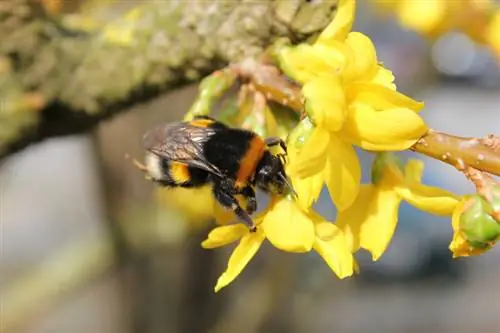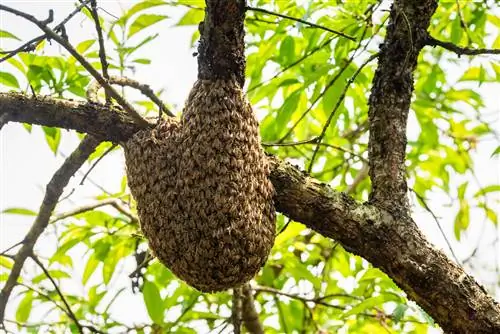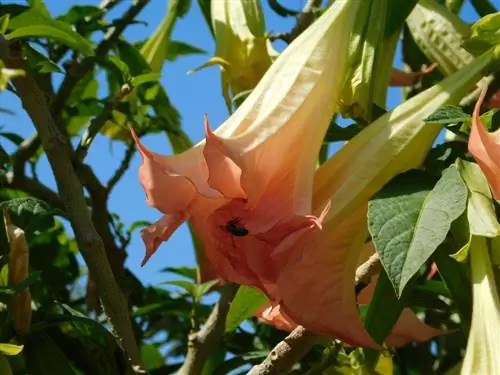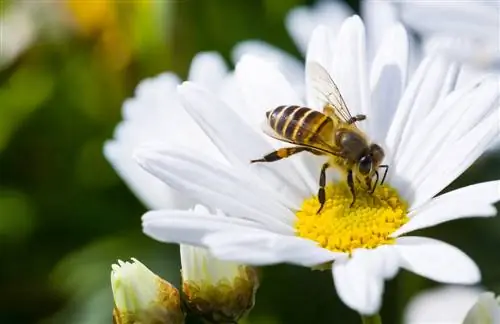- Author admin [email protected].
- Public 2023-12-16 16:46.
- Last modified 2025-01-23 11:20.
Many gardeners plant forsythia because their golden yellow colors make them a beautiful sight in the spring garden. They assume that so many flowers will also attract many bees. Unfortunately, this is a mistake. The bushes are completely useless for honey collectors.

Are forsythia good for bees?
Although forsythia impress with their bright yellow flowers in spring, they are almost worthless to bees because their dry flowers rarely produce pollen or nectar. An exception is the variety “Beatrix Farrand”, which supplies bees with pollen.
Forsythias originally come from China
Forsythias have not been known in our latitudes for that long. It wasn't until 1833 that the shrubs found their way from China to our gardens.
Forsythia (forsythia x intermedia) belongs to the olive family. It is an artificial breeding, a so-called hybrid, which was created from the species f. x suspensa and f. x viridissima.
The dry flowers are no pasture for bees
Like all hybrids, forsythia flowers rarely produce pollen or nectar. The gardener calls these “dry flowers.” The shrub is therefore propagated almost exclusively via cuttings and planters.
Forsythia is completely worthless for bees. They cannot collect nectar to produce honey.
If you ever observe a flowering forsythia bush, you will notice that the flowers are not visited by bees. Bees that appear sporadically are harbingers that will quickly turn away when they realize that they cannot find any food here.
Forsythias do not belong in natural gardens
Because of their dry flowers, forsythias, like cherry laurel, do not belong in a natural garden - with one exception!
Of course there is nothing wrong with planting a forsythia if there are enough other early bloomers in the garden. This is important so that the bees can find enough food for their offspring in the spring.
Exception: Forsythia “Beatrix Farrand”
Little known and therefore rarely planted is a variety of forsythia that produces pollen. This is the variety “Beatrix Farrand”.
This variety is therefore also well suited for natural gardens. It produces large, dark yellow flowers that are often visited by bees.
It is suitable for planting as a forsythia hedge or individually as an eye-catcher on the fence or in the bed.
Tips & Tricks
If you don't want to miss out on the pretty spring bloomers, plant native shrubs and flowers to compensate. You can find an overview of suitable early bloomers at BUND or NABU, for example.






